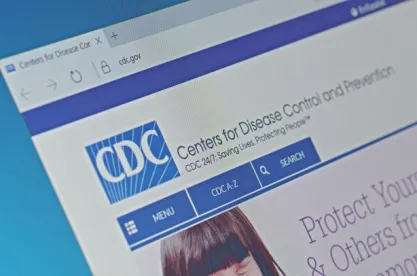The CDC’s recent guidance suggesting that most fully vaccinated individuals may discontinue certain safety measures, such as masking and social distancing, has created significant confusion for employers navigating conflicting and ever-changing state and local COVID-19 workplace laws, regulations and guidance. While the most recent CDC guidance endorses resuming activities (indoors and out) without masks for most fully vaccinated individuals, the guidance around vaccination verification and disparate treatment between the vaccinated and unvaccinated is still lacking. Employers are now facing these sensitive but critically important return to office issues without the benefit of critical guidance from Federal, state and local regulators. We provide some guidance below regarding vaccine verification and some considerations for employers thinking about instituting vaccine policies.
The Current Guidance Remains Incomplete, But Updates Should be Forthcoming
As with the CDC’s guidance, the EEOC’s December guidance also fails to provide specific guidance around vaccination inquiries. While the EEOC permits employers to obtain a “proof of receipt” of vaccination, the only additional guidance the EEOC offers is to warn employers against requesting medical information during the verification process to avoid triggering an ADA or GINA violation. While the EEOC guidance does not discuss the permissibility of treating vaccinated workers differently than unvaccinated workers, it reminds employers implementing a mandatory vaccination policy that they must offer reasonable accommodations to workers who remain unvaccinated for disability or religious-based reasons. OSHA’s January guidance does not address vaccine verification, but recommends employers require vaccinated and unvaccinated workers to follow the customary COVID-19 protective measures (such as wearing masks) because, it says, the data on COVID-19 transmissibility is not fully understood. But both agencies have updated their websites to indicate that they are considering the impact of the CDC’s recent updated guidance.
The current regulatory flux results in part from the lack of data around the impact of vaccines on disease transmission, the absence of a national approach for documenting and verifying COVID-19 vaccine status, and the apparent lack of coordination among the relevant agencies. In other words, while the CDC supports relaxing restrictions for most vaccinated individuals in the workplace, and the EEOC permits employers to ask about vaccination status, no Federal agency provides guidance on the most pressing questions for employers: how does an employer (or indeed any business) verify that someone has been fully vaccinated, and may to what extent may employers treat vaccinated workers differently from unvaccinated workers?
Employers Can Take Certain Steps to Verify Vaccination
There is no current national standard or registry for certifying COVID-19 vaccination status although some states have started to implement such systems, such as New York’s Excelsior Pass. The COVID-19 Vaccination Record Cards issued to individuals at vaccination sites are unverified by government regulation (such as a driver’s license or passport) and could easily be misplaced, altered, or even falsified. While paperwork must be presented to obtain the vaccine (identification and health insurance cards, for those who are insured), there is no national registry to verify vaccination.
Employers considering following the CDC’s guidance – again, in those jurisdictions that permit an individual to go maskless in the workplace, something that appears to be changing on a daily basis as reflected in the recent announcement from New York – should consider designing their vaccine verification policies to address the following:
-
A workplace vaccination policy should clearly identify the vaccination verification process, including the records the employee must provide – e.g. a CDC-issued vaccination card – but also, importantly, the policy should specify the information an employee should not provide – such as any medical or genetic information ancillary to the actual inoculation.
-
The vaccination policy should also make clear how the employee may obtain the vaccination record and encourage employees to keep a copy of the record. For example, some pharmacies are offering individuals the ability to access their vaccines records digitally and other businesses are offering free laminating services.
-
Employers should also consider whether they will encourage employees to obtain a vaccine passport (if one becomes available), but they should consult counsel before doing so, given the novelty of this issue (and the prohibition against such records in some jurisdictions) and the need to comply with data privacy regulations.
-
Employers should consider what happens if an employee claims the employee cannot obtain verification. If the employee did not make and cannot obtain a copy, the employer could require the employee to contact the vaccination site or state health department to understand how to retrieve one and provide the employee the necessary time off to do so. Employers could also elect to require employees to attest to their vaccination (in the same way employees acknowledge employment policies).
-
Employers should consider whether vaccination records must be updated to account for potential annual or other periodic booster vaccinations going forward.
-
Lastly, as with any employment policy, it is recommended that employers clearly state to the employee the potential consequences of violation, and the approach should be no different here.
Employers considering implementing workplace protocols based on vaccination status will need consider how they implement a vaccine-verification system for others who enter the employers’ premises, such as vendors, customers and those who service the business. Because we currently lack a national system for vaccine verification, this system might be based on requesting the individual to present vaccination cards or asking the individual to certify vaccination status in a manner similar to employees. Absent the ability to implement a robust system however, especially when dealing with individuals (such as retail customers) looking to engage in short-term access to a worksite, and absent a national registry or other government-sanctioned method of vaccination confirmation, the honor system might be the only system currently available.
Vaccine Status as Gatekeeping to Workplace Benefits
Vaccine-certified employees, while enjoying a mask-free workplace existence, create other challenges, and employers need to consider the legal and other consequences for creating workplace policies that provide certain benefits to vaccinated individuals, but necessarily impacts others who cannot benefit from those policies.
Employers must consider the impact of limiting workplace areas to vaccinated-only employees, such as kitchens, rest areas and other communal areas. Cordoning off workplace areas for the vaccinated-only or forcing unvaccinated workers to work in designated areas could potentially lead to other issues, as would providing badges advertising the wearer’s vaccination status to everyone in the workplace. While vaccine status might justify a change in workplace protocol (again, if state and local regulations permit it), the vaccinated employees who are permitted to remove their masks and gather in groups may be provided with employment benefits unshared by individuals who cannot be vaccinated, including for medical reasons or who have legitimate religious objections (or even for those who continue to be hesitant to take an experimental vaccine).
Employers must also be mindful of their workers’ reactions when implementing policies that treat workers differently. Some unvaccinated employees may perceive employment benefits as being provided to the vaccinated-only, which could create resentment and misunderstanding. Such a policy might also appear inequitable on its face, and could expose an employer to discrimination or other claims. At the same time, resentment and misunderstanding may materialize from vaccinated employees who are often equally as interested in vaccine status as the employer itself, particularly as scientific data around transmissibility takes shape. Employers, therefore, must be careful to ensure that their vaccinated workers do not in turn mistreat their unvaccinated coworkers, and from a recruiting and retention standpoint, there may be concerns that vaccinated employees may look for work elsewhere if they believe their employer is not addressing concerns about unvaccinated coworkers – whether those concerns are legitimate or not. Likewise, on the recruiting front, candidates for employment might press an employer to provide details about how the employer regulates vaccination, if at all, and those policies could potentially form the basis for employment decision-making.
Make Vaccination Policies Consistent and Flexible
Even before the pandemic, creating consistent and mindful workplace policies was challenging. The CDC’s recent guidance highlight just how difficult it is to create a consistent workplace policy when science is unpredictable and governmental regulation shifts without warning. Even other Federal agencies, such as OSHA, have yet to catch up. And employers of course must comply with rapidly changing state and local regulations – for multi-jurisdictional employers, the regulatory framework for returning to the office will be an onerous task. Under the circumstances, employers should be cautious about implementing a “vaccinated only” policy and if they wish to adopt such a policy, they should carefully consider the most appropriate method to ask for vaccine certification and design their workplace that allows both vaccinated and unvaccinated workers to succeed. Whether or not a vaccination policy is implemented, the consequences to the workforce, both from a morale and legal basis, are significant. Further regulatory guidance will be welcome.





 />i
/>i
